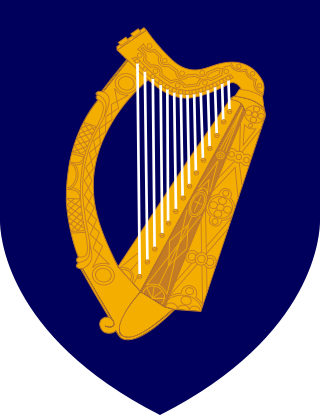Related Research Articles
Ransomware is a type of cryptovirological malware that permanently blocks access to the victim's personal data unless a ransom is paid. While some simple ransomware may lock the system without damaging any files, more advanced malware uses a technique called cryptoviral extortion. It encrypts the victim's files, making them inaccessible, and demands a ransom payment to decrypt them. In a properly implemented cryptoviral extortion attack, recovering the files without the decryption key is an intractable problem, and difficult-to-trace digital currencies such as paysafecard or Bitcoin and other cryptocurrencies are used for the ransoms, making tracing and prosecuting the perpetrators difficult.
A blended threat is a software exploit that involves a combination of attacks against different vulnerabilities. Blended threats can be any software that exploits techniques to attack and propagate threats, for example worms, trojan horses, and computer viruses.

The Internet has a long history of turbulent relations, major maliciously designed disruptions, and other conflicts. This is a list of known and documented Internet, Usenet, virtual community and World Wide Web related conflicts, and of conflicts that touch on both offline and online worlds with possibly wider reaching implications.
A cyberattack is any offensive maneuver that targets computer information systems, computer networks, infrastructures, personal computer devices, or smartphones. An attacker is a person or process that attempts to access data, functions, or other restricted areas of the system without authorization, potentially with malicious intent. Depending on the context, cyberattacks can be part of cyber warfare or cyberterrorism. A cyberattack can be employed by sovereign states, individuals, groups, societies or organizations and it may originate from an anonymous source. A product that facilitates a cyberattack is sometimes called a cyber weapon. Cyberattacks have increased over the last few years. A well-known example of a cyberattack is a distributed denial of service attack.

The WannaCry ransomware attack was a worldwide cyberattack in May 2017 by the WannaCry ransomware cryptoworm, which targeted computers running the Microsoft Windows operating system by encrypting data and demanding ransom payments in the Bitcoin cryptocurrency. It propagated by using EternalBlue, an exploit developed by the United States National Security Agency (NSA) for Windows systems. EternalBlue was stolen and leaked by a group called The Shadow Brokers a month prior to the attack. While Microsoft had released patches previously to close the exploit, much of WannaCry's spread was from organizations that had not applied these, or were using older Windows systems that were past their end-of-life. These patches were imperative to cyber security, but many organizations did not apply them, citing a need for 24/7 operation, the risk of formerly working applications breaking because of the changes, lack of personnel or time to install them, or other reasons.

Petya is a family of encrypting malware that was first discovered in 2016. The malware targets Microsoft Windows–based systems, infecting the master boot record to execute a payload that encrypts a hard drive's file system table and prevents Windows from booting. It subsequently demands that the user make a payment in Bitcoin in order to regain access to the system.
The 2018 SingHealth data breach was a data breach incident initiated by unidentified state actors, which happened between 27 June and 4 July 2018. During that period, personal particulars of 1.5 million SingHealth patients and records of outpatient dispensed medicines belonging to 160,000 patients were stolen. Names, National Registration Identity Card (NRIC) numbers, addresses, dates of birth, race, and gender of patients who visited specialist outpatient clinics and polyclinics between 1 May 2015 and 4 July 2018 were maliciously accessed and copied. Information relating to patient diagnosis, test results and doctors' notes were unaffected. Information on Prime Minister Lee Hsien Loong was specifically targeted.

The Waikato District Health Board was a district health board that provided healthcare to the Waikato region of New Zealand.
REvil was a Russia-based or Russian-speaking private ransomware-as-a-service (RaaS) operation. After an attack, REvil would threaten to publish the information on their page Happy Blog unless the ransom was received. In a high profile case, REvil attacked a supplier of the tech giant Apple and stole confidential schematics of their upcoming products. In January 2022, the Russian Federal Security Service said they had dismantled REvil and charged several of its members.
Ryuk is a type of ransomware known for targeting large, public-entity Microsoft Windows cybersystems. It typically encrypts data on an infected system, rendering the data inaccessible until a ransom is paid in untraceable bitcoin. Ryuk is believed to be used by two or more criminal groups, most likely Russian, who target organizations rather than individual consumers.
Emsisoft Ltd. is a New Zealand-based anti-virus software distributed company. They are notable for decrypting ransomware attacks to restore data.
A global wave of cyberattacks and data breaches began in January 2021 after four zero-day exploits were discovered in on-premises Microsoft Exchange Servers, giving attackers full access to user emails and passwords on affected servers, administrator privileges on the server, and access to connected devices on the same network. Attackers typically install a backdoor that allows the attacker full access to impacted servers even if the server is later updated to no longer be vulnerable to the original exploits. As of 9 March 2021, it was estimated that 250,000 servers fell victim to the attacks, including servers belonging to around 30,000 organizations in the United States, 7,000 servers in the United Kingdom, as well as the European Banking Authority, the Norwegian Parliament, and Chile's Commission for the Financial Market (CMF).
On May 7, 2021, Colonial Pipeline, an American oil pipeline system that originates in Houston, Texas, and carries gasoline and jet fuel mainly to the Southeastern United States, suffered a ransomware cyberattack that impacted computerized equipment managing the pipeline. The Colonial Pipeline Company halted all pipeline operations to contain the attack. Overseen by the FBI, the company paid the amount that was asked by the hacker group within several hours; upon receipt of the ransom, an IT tool was provided to the Colonial Pipeline Company by DarkSide to restore the system. However, the tool required a very long processing time to restore the system to a working state.
DarkSide is a cybercriminal hacking group, believed to be based in Russia, that targets victims using ransomware and extortion; it is believed to be behind the Colonial Pipeline cyberattack. It is thought that they have been able to hack and extort money from around 90 companies in the USA alone. The group provides ransomware as a service.

On 14 May 2021, the Health Service Executive (HSE) of Ireland suffered a major ransomware cyberattack which caused all of its IT systems nationwide to be shut down.
Conti is a ransomware hacker group that has been observed since 2020, believed to be distributed by a Russia-based group. It operates as a ransomware-as-a-service (RaaS), enabling other cybercriminals to deploy this malware for their own purposes. Conti is particularly known for its utilization of double extortion techniques, where it not only encrypts victim's files but also steals and threatens to publish sensitive data if the ransom is not paid.

Beginning on the night (UTC-6:00) of April 17, 2022, a ransomware attack began against nearly 30 institutions of the government of Costa Rica, including its Ministry of Finance, the Ministry of Science, Innovation, Technology and Telecommunications (MICITT), the National Meteorological Institute, state internet service provider RACSA, the Costa Rican Social Security Fund, the Ministry of Labor and Social Security, the Fund for Social Development and Family Allowances, and the Administrative Board of the Municipal Electricity Service of Cartago.
Hive was a ransomware as a service (RaaS) operation carried out by the eponymous cybercrime organization between June 2021 and January 2023. The group's purpose was to attack mainly public institutions to subsequently demand ransom for release of hijacked data.
Rhysida is a ransomware group that encrypts data on victims' computer systems and threatens to make it publicly available unless a ransom is paid. The group uses eponymous ransomware-as-a-service techniques, targets large organisations rather than making random attacks on individuals, and demands large sums of money to restore data. The group perpetrated the notable 2023 British Library cyberattack and Insomniac Games data dump. It has targeted many organisations, including some in the US healthcare sector, and the Chilean army.
References
- ↑ Fonseka, Dileepa (30 May 2021). "Ministry of Health abandoned cybersecurity system for Waikato and other DHBs due to budget issues". Stuff . Archived from the original on 1 June 2021. Retrieved 8 June 2021.
- 1 2 Moloney, Eoghan (18 May 2021). "Cyber attack similar to HSE breach cripples New Zealand district's health system". Irish Independent . Archived from the original on 24 May 2021. Retrieved 24 May 2021.
- 1 2 "Waikato DHB cyber attack: Group claims responsibility, says it has confidential patient details". The New Zealand Herald . 25 May 2021. Archived from the original on 25 May 2021. Retrieved 25 May 2021.
- ↑ "Waikato DHB cyber attack: Hackers' patient info is genuine, management concedes". The New Zealand Herald . 27 May 2021. Archived from the original on 27 May 2021. Retrieved 27 May 2021.
- ↑ "Waikato DHB data breach likely 'seven ... eight figure' cryptocurrency ransom - expert". Radio New Zealand . 28 May 2021. Archived from the original on 28 May 2021. Retrieved 8 June 2021.
- 1 2 "Most elective surgeries at Waikato Hospital continue to be performed". 19 May 2021. Archived from the original on 24 May 2021. Retrieved 24 May 2021.
- 1 2 Russell, Emma (21 May 2021). "Waikato DHB cyber attack 'biggest in New Zealand history'". New Zealand Herald . Archived from the original on 25 May 2021. Retrieved 24 May 2021.
- ↑ Preston, Nikki (26 May 2021). "Waikato DHB cyber attack: Cancer patients could be sent to Australia". The New Zealand Herald . Archived from the original on 25 May 2021. Retrieved 25 May 2021.
- ↑ McRae, Andrew; Gregan, Kate (2 June 2021). "Waikato DHB ransomware attack: Half of servers restored in past four days". Radio New Zealand . Archived from the original on 7 June 2021. Retrieved 8 June 2021.
- ↑ O'Dwyer, Ellen (8 June 2021). "Radiation therapy resumes at Waikato DHB". SunLive. Archived from the original on 8 June 2021. Retrieved 8 June 2021.
- 1 2 "Radiation therapy back up and running at Waikato DHB weeks on since cyberattack". 1 News . 7 June 2021. Archived from the original on 7 June 2021. Retrieved 8 June 2021.
- ↑ "Waikato DHB still affected by cyber attack". Radio New Zealand . 15 June 2021. Archived from the original on 25 June 2021. Retrieved 10 July 2021.
- ↑ Gunasegaran, Thiru (17 June 2021). "'A long way still to go', says Waikato DHB". Healthcare IT News. Archived from the original on 20 June 2021. Retrieved 10 July 2021.
- ↑ "Waikato DHB ransomware attack: Documents released online". Radio New Zealand . 29 June 2021. Archived from the original on 6 July 2021. Retrieved 10 July 2021.
- 1 2 Pullar-Strecker, Tom (29 June 2021). "Ransomware attack: Waikato DHB supporting patients after documents dumped online". Stuff . Archived from the original on 6 July 2021. Retrieved 10 July 2021.
- ↑ Manch, Thomas; Wilson, Libby (25 May 2021). "Waikato DHB scrambles to contain cyber attack, safety of patient data unclear". Stuff . Archived from the original on 25 May 2021. Retrieved 25 May 2021.
- ↑ Russell, Emma (26 May 2021). "Waikato DHB cyber attack: Privacy Commissioner warns all DHBs to fix its IT vulnerabilities". The New Zealand Herald . Archived from the original on 1 June 2021. Retrieved 8 June 2021.
- ↑ "World Politics Pacific Te Ao Māori Sport Business Country Local Democracy Reporting Comment & Analysis In Depth Weather NEW ZEALAND TECHNOLOGY30 Jun 2021 Waikato DHB won't face fines for data breach, but may face liability - Privacy Commissioner". 30 June 2021. Archived from the original on 29 June 2021. Retrieved 10 July 2021.